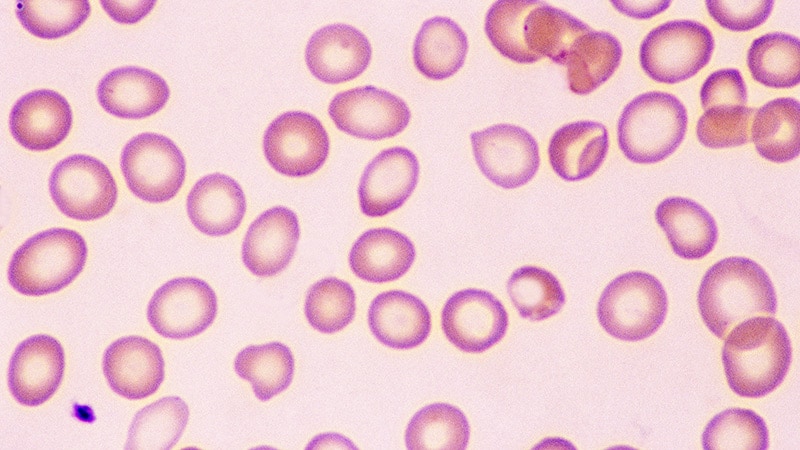Majority of Cancer Patients Lack Recommended Anemia Evaluation and Treatment
Conceitos essenciais
Many cancer patients do not receive recommended assessments and treatments for anemia, a common complication that can worsen outcomes.
Resumo
The content discusses the prevalence of anemia in cancer patients and the lack of adherence to clinical guidelines for evaluating and treating this condition.
Key highlights:
Anemia affects up to 90% of cancer patients with solid tumors, but can lead to worse quality of life and survival if left untreated.
The National Comprehensive Cancer Network (NCCN) recommends routine anemia evaluations for patients with hemoglobin levels ≤ 11 g/dL.
However, research shows that over 60% of cancer patients in the US do not receive thorough anemia assessments, and less than 40% receive appropriate treatment.
A study of over 25,000 cancer patients found that only 37% received further workup for their anemia, and less than 40% were treated, despite 44% being anemic.
Similar issues with inadequate anemia testing and treatment have been observed in an international study of cancer patients in Germany.
Reasons for poor adherence to guidelines include lack of awareness, coordination, and documentation among oncology teams that often work in siloes.
Untreated anemia can negatively impact patient outcomes and quality of life, underscoring the importance of following recommended anemia management practices.
Most Cancer Patients Don't Receive Recommended Anemia Care
Estatísticas
44% of 25,018 cancer patients had anemia within 6 months of diagnosis.
Only 37% of anemic patients received further workup to identify the cause.
Only 16% had iron testing and 14% had vitamin B12 or folate tests performed.
Less than 40% of anemic patients received treatment, including blood transfusions (32%), oral iron (12%), and intravenous iron (1%).
The likelihood of receiving treatment increased with anemia severity: 12% for grade 1, 31% for grade 2, and 77% for grade 3 anemia.
Citações
"Anemia is a common aspect of oncologic care and is something that should be evaluated and managed as part of a comprehensive cancer program."
"Anemia assessment is inadequate, transfusion rates too high, and iron and erythropoietin stimulating agent therapy too infrequent."
Principais Insights Extraídos De
by Nancy A. Mel... às www.medscape.com 06-26-2024
https://www.medscape.com/viewarticle/most-cancer-patients-dont-receive-recommended-anemia-care-2024a1000bxh
Perguntas Mais Profundas
What are the potential barriers that prevent oncology teams from adhering to anemia management guidelines, and how can these be addressed through targeted interventions?
One of the key barriers to adherence to anemia management guidelines in oncology teams is the lack of awareness and education regarding the importance of anemia assessment and treatment. This can be addressed through targeted interventions such as regular training sessions on anemia diagnostics and therapy. By increasing awareness and knowledge among healthcare providers, they are more likely to follow the recommended guidelines. Additionally, improving coordination and documentation within oncology teams can help ensure that anemia care is not overlooked or neglected.
How might the lack of anemia care impact long-term outcomes and quality of life for cancer patients, and what are the economic implications for the healthcare system?
The lack of anemia care in cancer patients can have significant negative impacts on long-term outcomes and quality of life. Untreated anemia can lead to worse survival rates and affect the overall well-being of patients. Fatigue, weakness, and decreased ability to tolerate cancer treatments are common consequences of untreated anemia, which can further compromise the patient's health. From an economic standpoint, the healthcare system may incur higher costs due to increased hospitalizations, complications, and the need for more intensive treatments if anemia is not managed effectively.
What innovative approaches or technologies could be leveraged to improve the detection, monitoring, and treatment of anemia in cancer patients across different care settings?
Innovative approaches and technologies can play a crucial role in improving the detection, monitoring, and treatment of anemia in cancer patients. For instance, the use of electronic health records (EHRs) can help streamline communication and documentation among healthcare providers, ensuring that anemia care is not overlooked. Telemedicine and remote monitoring tools can enable regular follow-up evaluations for patients with anemia, especially in settings where in-person visits may be challenging. Additionally, advancements in diagnostic tools, such as point-of-care testing for hemoglobin levels, can facilitate quicker and more accurate assessments of anemia, leading to timely interventions and improved outcomes for cancer patients.
0
